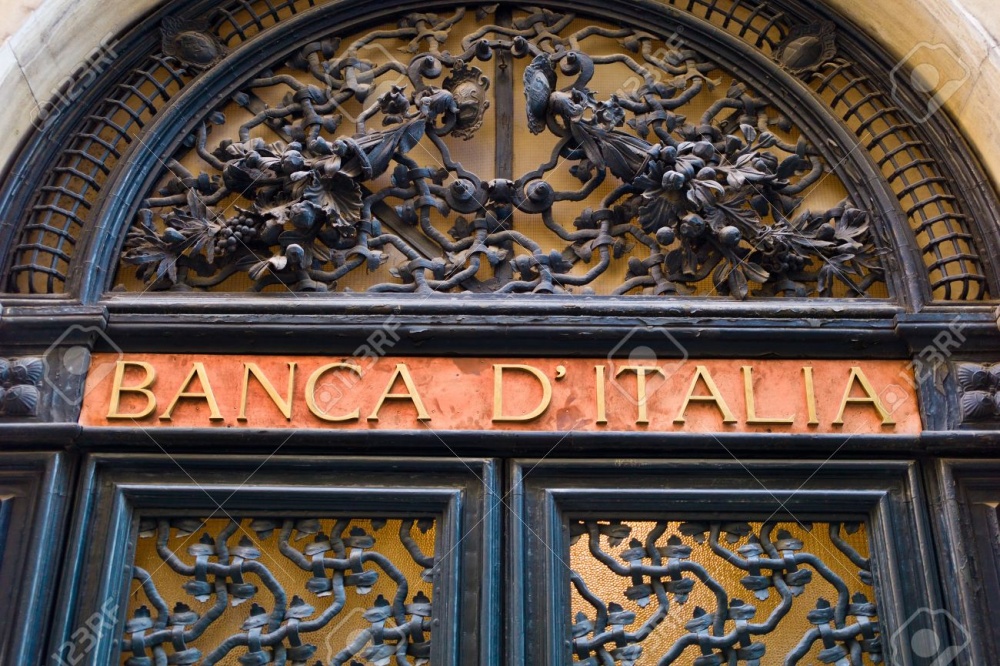
To put that in perspective, if American banks were in that same state, then the banks would have 3.35 TRILLION dollars in non-performing loans. Currently the US banking sector has only 1.67% of non-performing loans. Even at the peak of the banking crisis in the 2008-2009 time period, non-performing loans maxed out at 5.3%. In other words, Italy’s current banking crisis is four times as bad (if not more) as the worst the US saw in the 2008-2009 banking downturn.
There are numerous great articles on the topic, including:
- Italy on The Brick
- What’s the problem with Italian banks?
- The next EU crisis – in the Italian banks – needs to be addressed
The current situation has seen banking stocks of Italy plunge dramatically. Shares of Monte dei Paschi have gone down eighty six percent (86%) since the beginning of the year. This is to Italy’s third largest bank – which has been in existence since the 1400’s (before Columbus discovered America). In 2008 its market cap was 15b Euros, today it stands only at 1b. Shares of Carige are also down 88% since the beginning of the year.
Contagion across Europe is also a possibility if Italy’s banks swoon. Die Welt reports that French banks have over €250 billion of exposure and German banks hold €83.2 billion of bonds. Deutsche Bank alone has over €11.76 worth of Italian bonds, digging its own hole deeper.
Despite this, all of the politicians seem upbeat about the prospect of saving Italy’s banks (see e.g. Merkel, Padoan Confident Italian Bank Crisis Can Be Averted). The head of the IMF and Italy’s finance minister (Pier Carlo Padoan) have been very public in saying there is no banking crisis and have recently stated that bad debt could increase from its current levels without resulting in bank failure, so there is plenty of time to work out a solution. The most likely prospect is through a “bail-in” of taxpayer dollars. Other possible patches include shareholder and bond holder write downs or IMF assistance. Of course if the reports on ATM and bank cash runs are to be believed, then there really isn’t that much time left.
Which leads to the point we all care about – what do I need to do to either protect my assets or, even better, to profit off the situation. The best analogue we have is the Greek debt crisis of 2015. On June 29, 2015, the day Greece closed its banks to forestall default, the Dow Jones fell 2.0%, the Nasdaq 2.4%, and the S&P 500 2.1%. The Euro Stoxx 50 index, comprising of Europe’s 50 of the largest blue chip companies, fell an astonishing 4.2% in one day. Over the next weeks, the Europe Financial Sector index fund fell over fifty percent.
Here are possible instruments to target:
- FEZ, an ETF, allows you to invest in (or short) the Euro Stoxx 50 (no options);
- EWI, an ETF, allows you to invest in (or short) the Italian stock index (no options); and
- EUFN, an ETF, allows you to invest in (or short) the entire Europe Financial Sector (there are options but they are very low volume)
However, all of these have been crushed so far this year. EUFN is down 33% on the year as of today. That said, there is still room to move down as it is valued at $15.70.
There are numerous trades that can be constructed, depending on your view of what is going to occur. I personally think that the banking sector has a ways to go down, but that politicians and governments will get involved before a full collapse. There’s tons of equity and debt that these banks can just write off as of yet, taxpayer dollars could get involved, there could be a phantom recapitalization, and/or any number of other solutions structured to kick the can down the road, as also occurred in Greece in 2015. Below are some possible trades, based off of your opinion of what could occur:
Possibility One: Italian banks reach full on crisis, threat of contagion exists, and the markets go down. After which the EU and governments get involved, bail out the banks, and the markets recover.
Buy a near-term put such as the August 19 EUFN at the $15 strike (EUFN is currently trading at $15.70)
Buy a long dated DITM call (such as the $12 January 20, 2017)
Possibility Two: A bailout of some form is fashioned in the near future, leading to a recovery of sorts without things dropping more than they already have.
Utilize a covered call at the money (such as the August 19 $15 strike). At current prices that would yield between 2%-3% on a thirty day hold. If there is just a small price downturn, you are protected from the cash you receive. If prices rebound, your stock will get called away, but you will still clear the 2%-3%. (This is not my favorite strategy as I view a 2% yield to be too small to own a position as high risk as this).
Possibility Three: Italy acts outside of the EU’s rules (breaking the Euro treaty) and has direct cash infusions by taxpayers into the bank.
Short as much FEZ as you can – if you add Italy flat out violating the Euro charter and going against Merkel, the resulting chaos might look the Brexit look tame.
The above are not an exhaustive list of trades to be structured around this current bank crisis. I would encourage all of our readers to comment and discuss on other opportunities which may exist given the current situation with Italian banking. I personally am watching this closely as you don’t frequently get the chance to discuss crisis beforehand. It is much more typical for most people to be surprised. (Of course that means maybe this is already priced into current prices).
Lastly, none of the above is to be construed as investment advice or a recommendation. I do not know your individual situation, your ability to tolerate risk, or any other factors which would be necessary to make an investment in securities. You may not construe the contents of this article as investment, legal, or tax advice. You should not assume my predictions are accurate or rely upon the above comments whatsoever.
Christopher B. Welsh is an attorney practicing in Dallas, Texas. He is a licensed investment adviser in the State of Texas and is the president of a small investment firm, Lorintine Capital, LP which is a general partner of two separate private funds. He offers investment advice to his clients, both in the law practice and outside of it. Chris is an active litigator and assists his clients with all aspects of their business, from start-up through closing. Chris has a Bachelor of Science in Economics, a Bachelor of Computer Science from Texas A&M University and a law degree from Southern Methodist University. Chris is managing the Anchor Trades portfolio.







There are no comments to display.
Create an account or sign in to comment
You need to be a member in order to leave a comment
Create an account
Sign up for a new account. It's easy and free!
Register a new account
Sign in
Already have an account? Sign in here.
Sign In Now